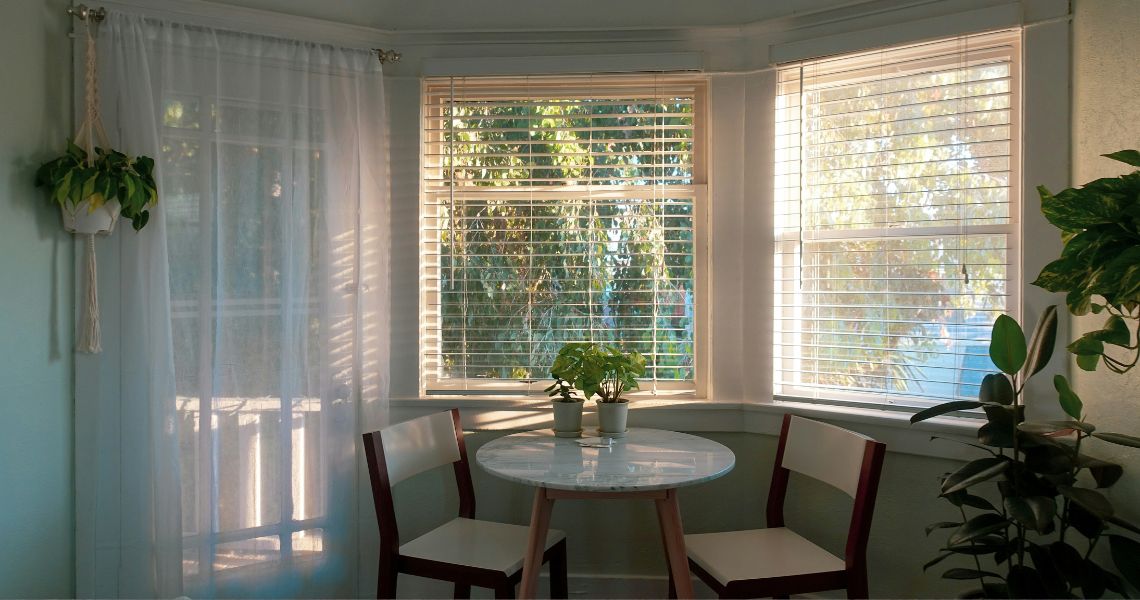Getting consistent, high-quality sleep doesn’t always require a complete lifestyle overhaul. Sometimes, it’s about noticing what’s already in your space and making subtle adjustments. Certain changes in your bedroom can encourage a smoother wind-down, fewer disturbances through the night and a more restful morning.
A few straightforward tweaks might be enough to improve how quickly you fall asleep, how long you stay asleep and how refreshed you feel when you wake up. It all starts with how your bedroom supports, or disrupts, your sleep patterns.
Let’s look at a few simple improvements that can create a noticeable shift in how you rest.
Declutter for Mental Calm
A tidy room encourages a calm mind. Why? Cluttered surfaces create low-level stress and distraction, even if you don’t consciously notice it. As such, clearing excess items can instantly impact how relaxed you feel when entering your room.


Focus on obvious clutter first. Start by removing stacks of paper, unused gadgets, and scattered washing. Additionally, you can clear out drawers and nightstands of things that don’t belong. Not only this, but keeping floor space open and pathways clear helps your brain associate your room with peace, not chores.
Once calm is established, storage boxes or under-bed containers can help. Make tidying part of your pre-sleep routine. Five minutes spent resetting your space at night often leads to a smoother transition into rest.
Adjust Your Light and Temperature Settings
Light affects your circadian rhythm more than most people realise. Harsh lighting late in the evening can confuse the body and delay sleep. Softer bulbs and low-level lamps help send the right signals when you’re preparing to settle down.

Installing blackout blinds or using a sleep mask limits external light from interfering. Avoid bright ceiling lights in the hour before bed. Choose warm-toned bedside lamps or salt lamps to provide a calm glow.
Temperature also matters. According to the NHS, a bedroom kept between 16 to 18°C is ideal for sleep. If your room tends to overheat, consider switching your duvet to a lighter tog or opening a window slightly. Colder temperatures help your body cool down naturally, which encourages deeper rest.
Introduce Consistent Sound for Better Rest
Noise interruptions are one of the most common reasons people wake up through the night. Whether it’s neighbours, traffic, or creaky pipes, those sounds can affect one’s ability to drift into deep sleep stages.

A white noise machine works by masking unpredictable sounds with a steady audio backdrop. This consistent sound keeps the brain from reacting to sudden changes, which can lead to better sleep continuity. For adults who are light sleepers, or for those living in noisy flats, this makes a noticeable difference.
Parents dealing with unsettled nights often find a white noise machine, a baby model, helpful. These devices are designed with infant-friendly settings and help build early sleep associations.
Of course, if you want to explore reliable options, you can shop the best white noise machine online. Look for features like a portable design, adjustable volume and different sound profiles so you can tailor it to your needs.
Switch Out Your Bedding and Fabrics
Comfort has everything to do with what you sleep on and under. Old bedding often loses shape, becomes scratchy, and traps heat. Refreshing your sheets and duvet with breathable fabrics improves airflow and temperature regulation.

Look for natural fibres like cotton, linen or bamboo. These materials wick moisture and help maintain comfort across different seasons. Avoid synthetic blends that trap heat and cause sweating during the night.
Even pillowcases can make a difference. Switching to silk or soft cotton covers reduces skin friction and can feel cooler on the face. Focus on the textures you enjoy sleeping in – that comfort will feed into the quality of your sleep.
Rotating bedding every few months based on temperature also helps. Keep lightweight covers for warmer nights and thicker options close by for chillier evenings.
Set Up Sleep-Only Zones
Mixing your bedroom with work or entertainment habits blurs boundaries your brain relies on to wind down. If your bed doubles as a desk, sofa or screen station, it becomes harder to switch into rest mode.

Create small rituals that signal the shift towards sleep. Plug your phone to charge away from your bed. Keep tablets, laptops and TVs out of arm’s reach. Turn off overhead lights and rely on a single dim lamp during the final hour of your evening.
Try limiting your bed use to sleep and low-energy activities like reading or meditating. Repetition helps your brain build clear associations. Over time, your body will learn to relax when you enter the room or get into bed.
If your bedroom is shared or small, a simple divider, like a screen or curtain, can help separate spaces and reinforce that boundary mentally.
Sleep Starts with the Space Around You

Creating a supportive sleep space doesn’t need to be complicated. Small adjustments to your bedroom setup can noticeably impact how you wind down and stay asleep. Try making one or two of these changes tonight. Improving sleep is often less about effort and more about intention, and your bedroom is a great place to start.
Images courtesy of unsplash.com and pexels.com












